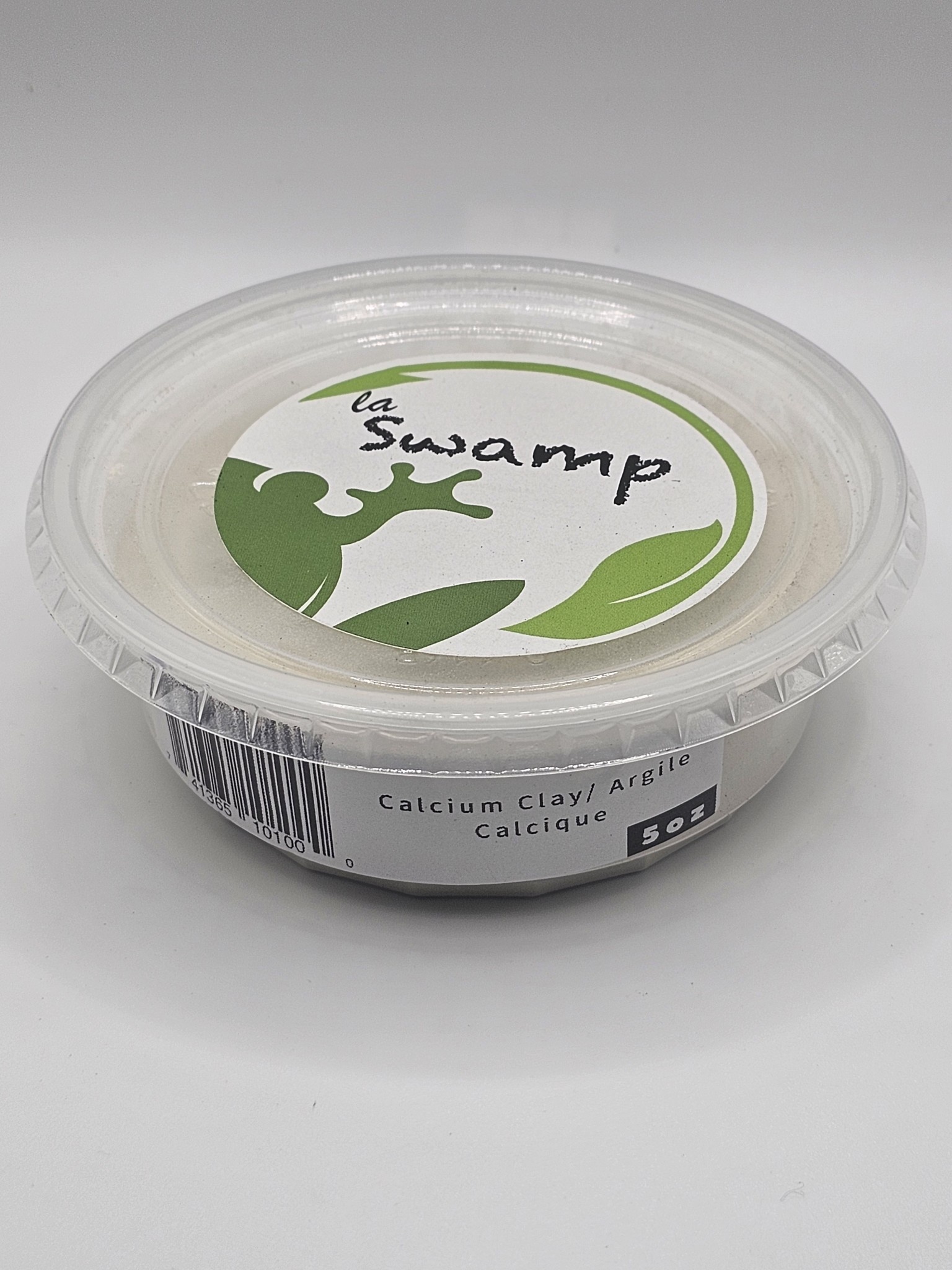Calcium clay 5oz
Using a Clay Substrate for springtails is becoming increasingly popular within the Dart Frog hobby around the world.
| Availability: | In stock (2) |
| Delivery time: | The delivery time will be 3 to 10 working days depending on the delivery method chosen. |
While the traditional method of using horticultural charcoal like Biochar, is still the most popular, the clay substrate has other major advantages.
One of the main advantages of using Calcium Bearing Clay as a springtail substrate is that it allows you to “Dry Harvest” your springtails. Now you are able to “dust” these tiny invertebrates with minerals and vitamins before feeding them to your pets, such as Dart Frogs. This is especially beneficial for raising tiny baby froglets, as they have tiny mouths and may not be able to hunt or eat other larger prey items like fruit flies.
Another advantage, is that the springtails will also digest tiny amounts of the Calcium Bearing Clay.
The clay contains large amounts of calcium carbonate which is highly beneficial to proper bone growth and development in froglets. The clay also contains trace amounts of other minerals such as copper, iron, strontium and zinc not normally found in a commercially available vitamin supplement for your frog pets.
Now you can provide better nutrition to your tiny froglets that better mimics what they would eat in the wild.
Instruction for calcium clay:
For an 8 ounce springtail culture, mix 4 tablespoons of calcium clay powder and 3 tablespoons of water (reverse osmore or spring water is ideal). Mix well and spread the mixture over the bottom and a little up the sides of the container.
For a 16-ounce springtail culture, simply double the amount of clay and water – 8 tablespoons of calcium clay and 6 tablespoons of water.
This ratio can be used at the appropriate container size at an approximate ratio of 1.25 (calcium clay) to 1 (water).
When adding water, go gradually, then add a little more water afterward if necessary, until you achieve the desired amount and consistency.









